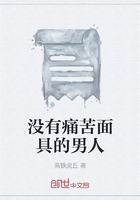The wharves, or quays, as they lie on the Thames side from east to west, are, Smart's Quay, Billings gate, Little Somer's Quay, Great Somer's Quay, Botolph Wharf, Cox's Quay, and Fresh Wharf which last is the next quay to the bridge; of which Billingsgate is much the most resorted to.It is a kind of square dock, or inlet, having quays on three sides of it, to which the vessels lie close while they are unloading.By a statute of the 10th and 11th of William III.it was enacted, "That Billingsgate should be a free market for fish every day in the week, except Sundays." That a fishing-vessel should pay no other toll or duty than the Act prescribes, viz., every salt-fish vessel, for groundage, 8d.per day, and 20d.per voyage; a lobster boat 2d.per day groundage, and 13d.the voyage;every dogger boat, or smack with sea-fish, 2d.per day groundage, and 13d.the voyage; every oyster vessel, 2d.per day groundage, and a halfpenny per bushel metage.And that it should be lawful for any person who should buy fish in the said market to sell the same in any other market or place in London, or elsewhere, by retail." And because the fishmongers used to buy up great part of the fish at Billingsgate, and then divide the same among themselves, in order to set an extravagant price upon them, it was enacted, "That no person should buy, or cause to be bought, in the said market of Billingsgate, any quantity of fish, to be divided by lot among the fishmongers, or other persons, with an intent to sell them afterwards by retail; and that no fishmonger should buy any more than for his own use, on pain of 20 pounds." And by the 6th Annae it was enacted, "That no person should buy fish at Billingsgate to sell again in the same market; and that none but fishermen, their wives, or servants, should sell fish by retail at Billingsgate; and that none should buy or sell fish there before the ringing of the market bell."The public buildings in this ward are Butchers' Hall, and the churches of St.Mary Hill, St.Margaret Pattens, and St.George, in Botolph Lane.
10.Bridge Ward Within contains London Bridge, New Fish Street, Gracechurch Street as far as Fenchurch Street, Thames Street from Fish Street to the Old Swan, part of St.Martin's Lane, part of St.
Michael's Lane, and part of Crooked Lane.
The public buildings in this ward are London Bridge, the Monument, Fishmongers' Hall, and the churches of St.Magnus and St Bennet, Gracechurch Street.
The Monument stands on the west side of Fish Street Hill, a little to the northward of the bridge, and was erected by the legislative authority, in memory of the Fire, anno 1666, and was designed by Sir Christopher Wren.It has a fluted column, 202 feet high from the ground; the greatest diameter of the shaft 15 feet, and the plinth, or lowest part of the pedestal, 28 feet square, and 40 feet high;the whole being of Portland stone, except the staircase within, which is of black marble, containing 345 steps, ten inches and a half broad, and six inches deep; and a balcony on the outside 32feet from the top, on which is a gilded flame.The front of the pedestal, towards the west, contains a representation of the Fire, and the resurrection of the present city out of the ruins of the former.
11.Candlewick or Cannon Street Ward contains part of Great East Cheap, part of Candlewick, now called Cannon Street, part of Abchurch Lane, St.Nicholas Lane, St.Clement's Lane, St.Michael's Lane, Crooked Lane, St.Martin's Lane, St.Lawrence Poultney Lane, with the courts and alleys that fall into them.
In Cannon Street is that remarkable stone called London Stone, which has remained fixed in the ground many hundred years, but for what end is uncertain, though supposed by some to be the place from whence the Romans began to compute the number of miles anciently to any part of the kingdom.
12.Walbrook Ward contains the best part of Walbrook, part of Bucklersbury, the east end of Budge Row, the north end of Dowgate, part of Cannon Street, most of Swithin's Lane, most of Bearbinder Lane, part of Bush Lane, part of Suffolk Lane, part of Green Lattice Lane, and part of Abchurch Lane, with several courts and lanes that fall into them.
Stocks Market consists of a pretty large square, having Cornhill and Lombard Street on the north-east, the Poultry on the north-west, and Walbrook on the south-east.Before the Fire it was a market chiefly for fish and flesh, and afterwards for fruit and garden stuff.
In this market Sir Robert Vyner, Bart.and Alderman, erected a marble equestrian statue of King Charles II., standing on a pedestal eighteen feet high, and trampling on his enemies.
The public buildings in this ward are Salters' Hall, the churches of St.Swithin and St.Stephen, Walbrook.
13.Dowgate, or Dowgate Ward, so called from the principal street, which has a steep descent or fall into the Thames, contains part of Thames Street, part of St.Lawrence-Poultney Hill, part of Duxford Lane, part of Suffolk Lane, part of Bush Lane, part of Dowgate Hill, Checquer Yard, Elbow Lane, and Cloak Lane; and the southward of Thames Street, Old Swan Lane, Cole Harbour, Allhallows Lane, Campion Lane, Friars Lane, Cozens Lane, Dowgate Dock, and the Steel Yard.
The public buildings in this ward are Tallow-chandlers' Hall, Skinners' Hall, Innholders' Hall, Plumbers' Hall, Joiners' Hall, Watermen's Hall, and the church of Allhallows the Great.
14.Vintry Ward (which was so called from the wine merchants who landed and sold their wines here) contains part of Thames Street, New Queen Street, Garlick Hill, College Hill, and St.Thomas Apostles.
The public buildings in this ward are Vintners' Hall, Cutlers' Hall, the churches of St.Michael Royal and St.James, Garlick Hill.














